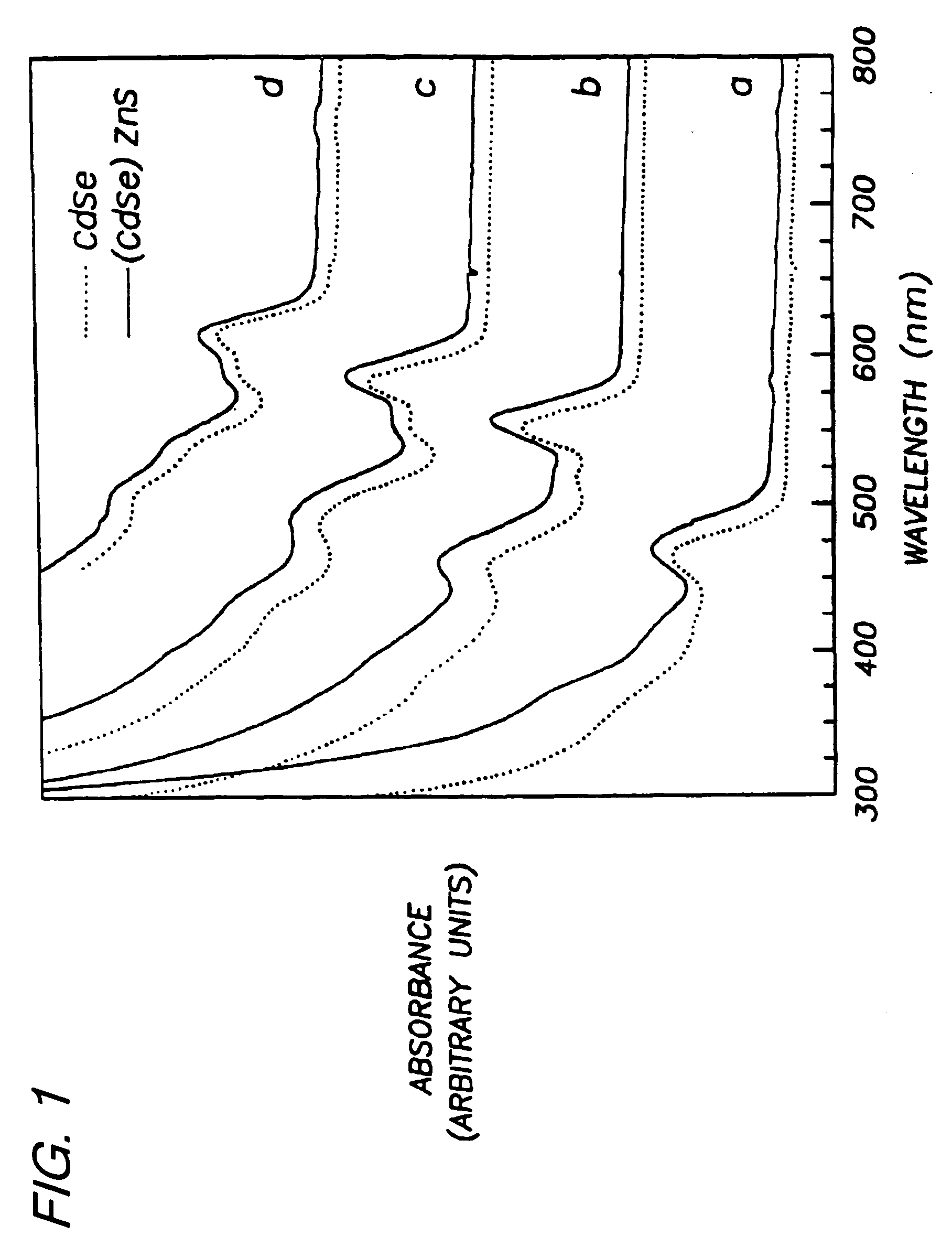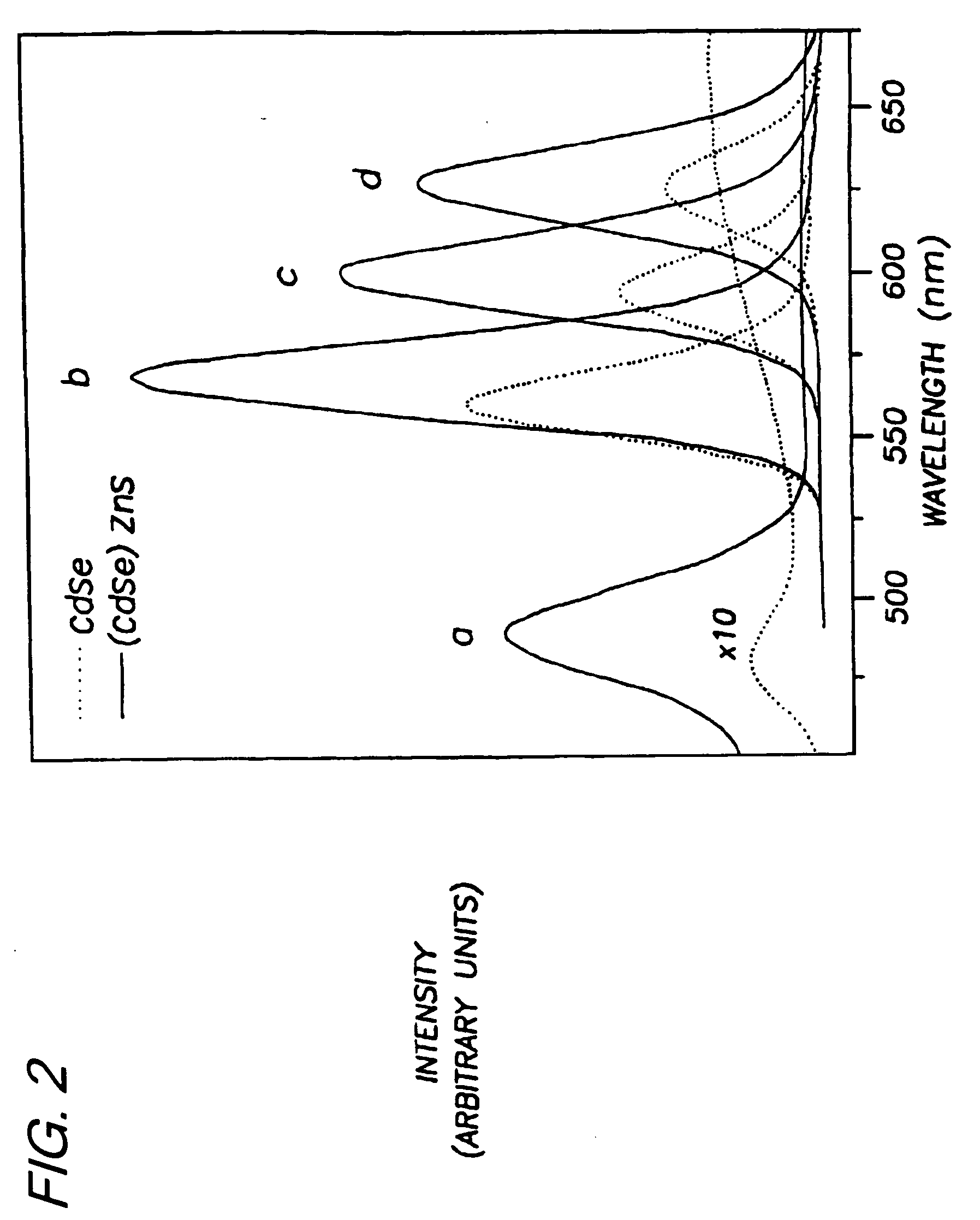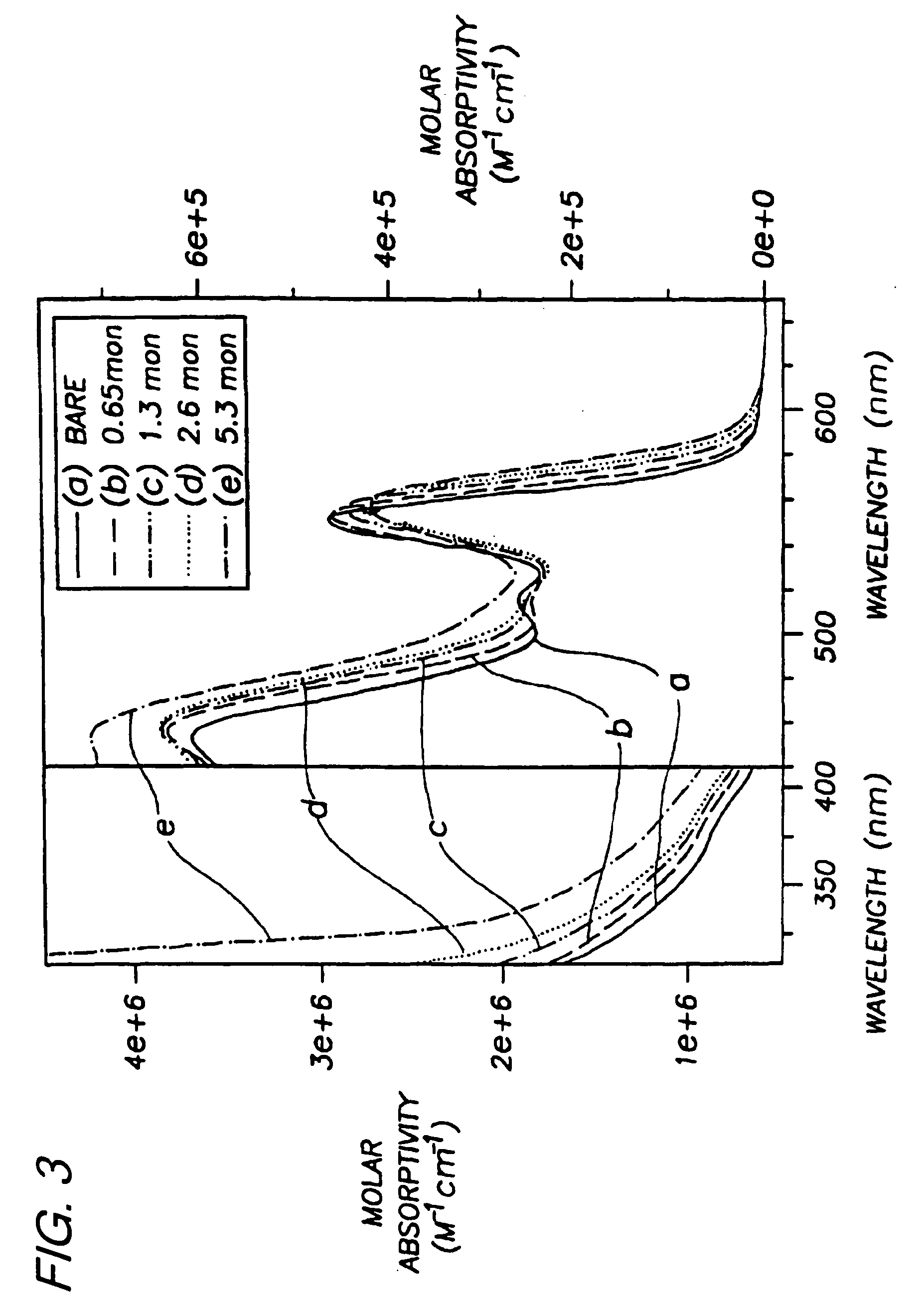Highly luminescent color-selective nanocrystalline materials
a nanocrystalline material, color-selective technology, applied in the direction of group 5/15 element organic compounds, natural mineral layered products, synthetic resin layered products, etc., can solve the problems of poor luminescence properties of crystallites, low quantum efficiency of dots, and inability to commercially useful in light-emitting applications, so as to promote organic compound coordination
- Summary
- Abstract
- Description
- Claims
- Application Information
AI Technical Summary
Benefits of technology
Problems solved by technology
Method used
Image
Examples
example 1
[0046] Preparation of CdSe. Trioctylphosphine oxide (TOPO, 90% pure) and trioctylphosphine (TOP, 95% pure) were obtained from Strem and Fluka, respectively. Dimethyl cadmium (CdMe2) and diethyl zinc (ZnEt2) were purchased from Alfa and Fluka, respectively, and both materials were filtered separately through a 0.2 μm filter in an inert atmosphere box. Trioctylphosphine selenide was prepare by dissolving 0.1 mols of Se shot in 100 ml of TOP thus producing a 1 M solution of TOPSe. Hexamethyl(disilathiane) (TMS2 S) was used as purchased from Aldrich. HPLC grade n-hexane, methanol, pyridine and n-butanol were purchased from EM Sciences.
[0047] The typical preparation of TOP / TOPO capped CdSe nanocrystallites follows. TOPO (30 g) was placed in a flask and dried under vacuum (1 Torr) at 180° C. for 1 hour. The flask was then filled with nitrogen and heated to 350° C. In an inert atmosphere drybox the following injection solution was prepared: CdMe2 (200 microliters, 2.78 mol), 1 M TOPSe sol...
example 2
[0052] Preparation of CdSe. A second route to the production of CdSe core replaces the phosphine chalcogenide precursors in Example 1 with (TMS)2Se. The smallest (˜12 Å) CdSe species are produced under milder conditions with injection and growth carried out at ˜100° C. The product was further treated as described in Example 1.
example 3
[0053] Preparation of (CdSe)ZnS. Nearly monodisperse CdSe quantum dots ranging from 23 Å to 55 Å in diameter were synthesized and purified via size-selective precipitation as described in Example 1.
[0054] A flask containing 5 g of TOPO was heated to 190° C. under vacuum for several hours then cooled to 60° C. after which 0.5 mL trioctylphosphine (TOP) was added.
[0055] Roughly 0.1-0.4 μmols of CdSe dots dispersed in hexane were transferred into the reaction vessel via syringe and the solvent was pumped off.
[0056] Diethyl zinc (ZnEt2) and hexamethyldisilathiane ((TMS)2S) were used as the Zn and S precursors, respectively. The amounts of Zn and S precursors needed to grow a ZnS shell of desired thickness for each CdSe sample were determined as follows: First, the average radius of the CdSe dots was estimated from TEM or SAXS measurements. Next, the ratio of ZnS to CdSe necessary to form a shell of desired thickness was calculated based on the ratio of the shell volume to that of the...
PUM
| Property | Measurement | Unit |
|---|---|---|
| FWHM | aaaaa | aaaaa |
| FWHM | aaaaa | aaaaa |
| quantum efficiency | aaaaa | aaaaa |
Abstract
Description
Claims
Application Information
 Login to View More
Login to View More - R&D
- Intellectual Property
- Life Sciences
- Materials
- Tech Scout
- Unparalleled Data Quality
- Higher Quality Content
- 60% Fewer Hallucinations
Browse by: Latest US Patents, China's latest patents, Technical Efficacy Thesaurus, Application Domain, Technology Topic, Popular Technical Reports.
© 2025 PatSnap. All rights reserved.Legal|Privacy policy|Modern Slavery Act Transparency Statement|Sitemap|About US| Contact US: help@patsnap.com



